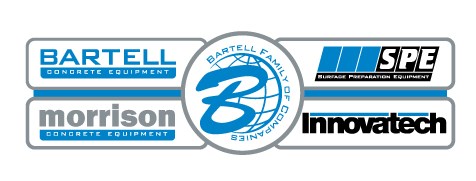 Add My Company
Add My Company
Sign In

Why Shotblasting Education month? Over the past 6 months, we have heard an increasing interest in shotblasting from customers who were very unfamiliar with it. Because shot blasting is so effective in surface prep, we saw this as a opportunity to educate you on the technology, uses, and benefits of it. With decades of experience in not only manufacturing machinery, but also surface prep contracting in Europe, we thought we would pass along our expertise.
Theory of Shotblasting
Shotblaster Line Art Shotblast Education Month Week 1-01
SHOTBLASTING IS A SURFACE TREATMENT PROCESS USING HIGH VELOCITY STEEL ABRASIVE.What is Shotblasting? The basic principal of the blasting operation is preformed by abrasive being thrown at a high velocity against the surface to be cleaned. The throwing action is achieved through centrifugal force, where a wheel with paddle-type blades attached radially, is revolved at a continuous shaft speed. Onto this wheel, abrasive is fed in such a manner that it travels along the radial length of the blades, and is thrown off in a high velocity stream at the surface to be cleaned. The energy placed into the abrasive is sufficient to enable it to rebound from the work surface. The rebound (kinetic energy) is used to recover the abrasive for re-use.
SHOTBLASTING HELPS OBTAIN CLEANING AND SURFACE PREP FOR SECONDARY FINISHING.The machine is designed so that the blast wheel is throwing abrasive at an inclined angle relative to the work surface. This means after striking the work surface, the abrasive rebounds at a similar angle into the reclaim duty which directs it back into the hopper for re-use. Assisting with the reclaim cycle, the air flow created by the dust
collector enters the machine through a brush screen at the real of the cabinet, and flows across the work surface, up the reclaim duct, through the separators, and in the dust collector. Then it moves through the fan and into the atmosphere. All of the surface contamination which has been collected in the dust collector must be disposed of under the COSHH and Health and Safety guidelines.
Mechanical Process
THE ABRASIVE IMPACT FORCE OF THE SHOT HITTING THE FLOOR REMOVES SURFACE CONTAMINATS
Shot is loaded in the hopper of the machine. The hopper acts as a funnel to direct the shot to the shot valve
The shot valve (butterfly valve) controls the volume of shot that is allowed to flow down a spout and into the blast housing. The shot valve is control by cable or lever located in the operator’s position for easy accessibility
After passing through the shot valve the flow of shot is directed by a ‘Control Cage’. This allows the shot to fall on the optimal position of the blast wheel. The Control Cage can be calibrated (adjusted) to ensure that the shotblaster is achieving an even blast pattern across the width of the machine
After passing through the Control Cage, the shot is impacted by the Blast Wheel and travels at a high velocity towards the floor. Depending on the size of the machine, the blast wheel can either be a one piece unit or made up of a center housing with a series of blades (paddles)
The abrasive impact force of the shot hitting the floor removes surface contaminants and leaves a clean, dry profile
The rebounded shot and debris then travel up the reclaim channel and land on a shelf located directly above the hopper. Once the shelf becomes full, the shot and debris overflow off the shelf. The lighter debris particles are removed by the suction provided by dust collector and the heavier shot is recycled back into the hopper
The process described above is a continuous cycle. Over time the shot breaks down (wears away) and new shot needs to be added to the hopper
For more information on WHAT IS SHOTBLASTING? SHOTBLASTING EDUCATION MONTH talk to SPE Group
Enquire Now
List your company on FindTheNeedle.

